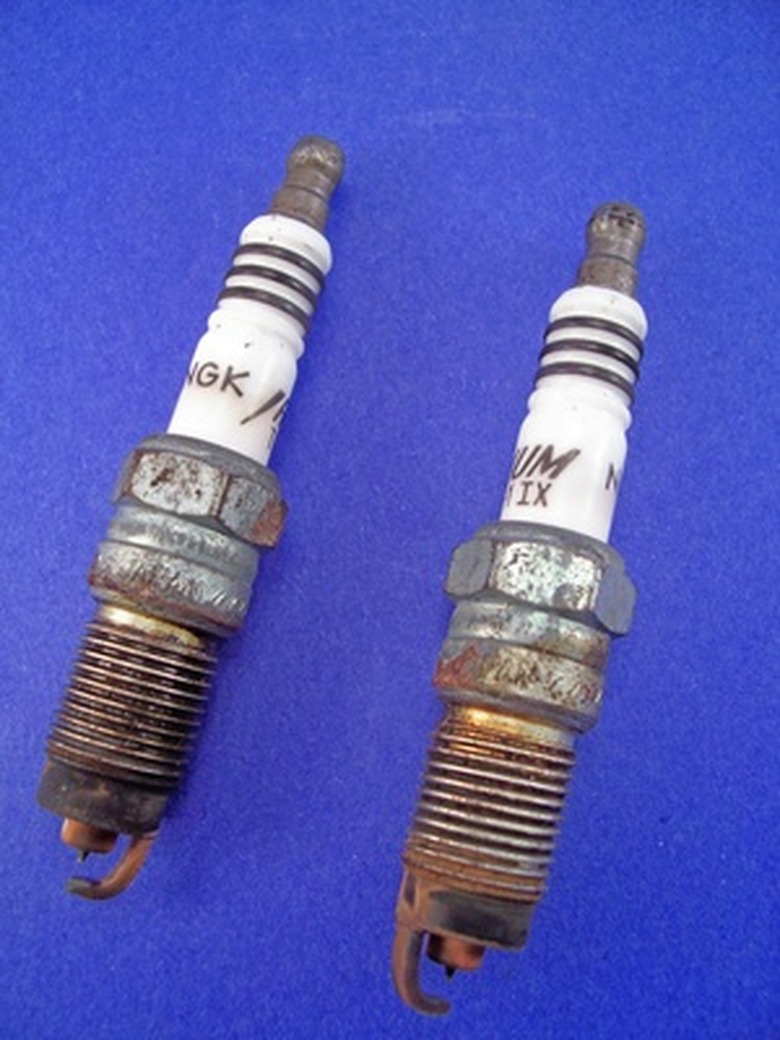What Is The Spark Plug Gap On A Lawnmower?
Lawnmowers come in three types: gasoline powered, electric and manual (or push mower.) Some electric lawnmowers have power cords that attach to outlets and some have batteries. Push mowers have no motor but a set of revolving blades driven by a gear connected to the wheels. Gasoline-powered mowers have internal combustion engines of various sizes. Gasoline-powered engines of all types need an ignition source so the air and gasoline in the cylinders will explode to produce energy. The ignition source is a spark plug.
Spark plug
Spark plugs are rather simple devices operating on electricity generated by the running engine. It's not quite perpetual motion because another energy source (pulling a start cord, or a battery for some riding mowers) is needed to start the motor. Once the motor is running, however, it generates electricity to power the spark plug. The spark plug creates a small open electrical charge inside the cylinder to ignite the fuel. The fuel explodes and pushes the pistons, which drive a shaft turning the lawnmower blade, driving wheels on a riding lawnmower and making electricity for the spark plug. Then the cycle repeats.
Anode
The anode is a small post covered by a metal tongue on one end of the spark plug. When the spark plug is screwed into the motor, the anode is positioned inside the cylinder housing. The anode has two parts: the center electrode (the post) and the ground electrode (the tongue.)
Gap
Depending on the type of spark plug needed for your lawnmower engine, the gap between the post and tongue (center and ground electrodes) must be set a specific width. If the gap is too large, the spark generated in the center electrode will not travel completely to the ground electrode. If the gap is too small, the spark does not have enough space to be generated with the necessary power to ignite the fuel.
Gap tool
A simple tool is used to set the spark plug gap. A round piece of metal has several different pieces of wire attached. Each wire is a different thickness ranging from one to six millimeters. A spark plug's proper gap is written on the packaging. Use the correct wire to open or close the gap so the wire passes between electrodes with no clearance.
Faulty gap
Shipping and handling can cause new spark plugs to get bumped and the ground electrode to move. Always check the gap before installing new spark plugs. Gaps can get misadjusted by dropping the spark plug on its ground electrode, by engine heat causing the ground electrode to slightly move or by constant use eating away part of the ground electrode. When the anode gets thinner, the gap is increased. Using the gap tool can reset the proper distance, but eventually the ground electrode will wear and break. When this happens, replace the spark plug.
